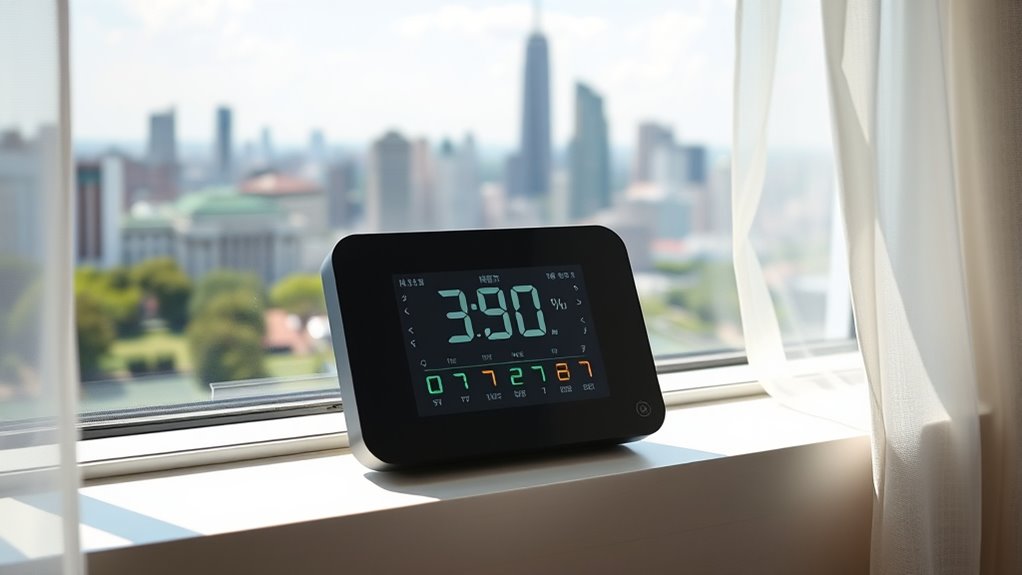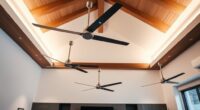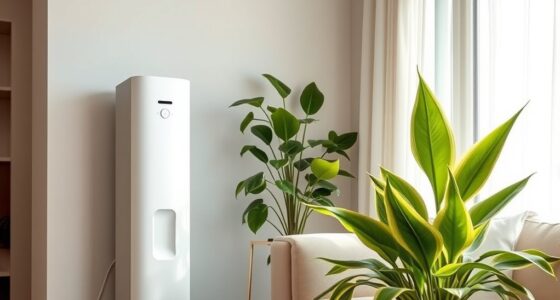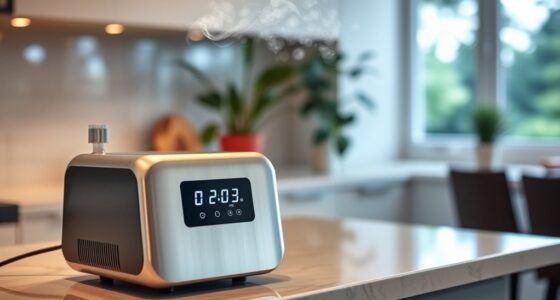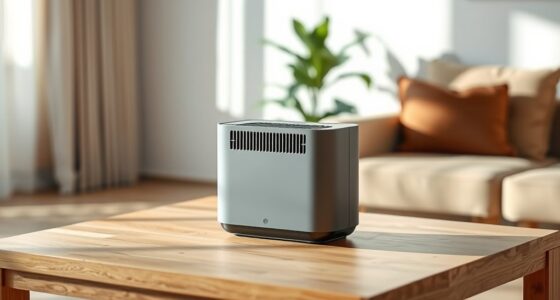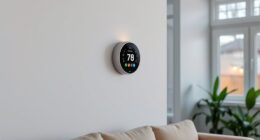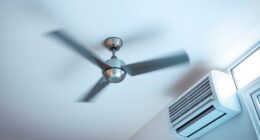Air quality monitors can really work if you choose the right device and guarantee it’s properly calibrated. They can effectively track pollutants like dust, allergens, and VOCs, helping you identify problem areas and improve your environment. Keep in mind that sensor quality varies, so investing in a reliable model makes a difference. While they are useful tools, understanding their limits and using them alongside good cleaning and ventilation practices will give you the best results. Learn more about maximizing their effectiveness.
Key Takeaways
- Effectiveness depends on sensor quality and proper calibration for accurate allergen detection.
- Portable monitors vary in accuracy; high-quality sensors provide more reliable readings.
- They are useful for tracking trends but do not offer a complete air quality picture.
- Proper interpretation and supplementary actions like cleaning improve indoor air health.
- Overall, they can be effective tools when used correctly and combined with other air quality practices.
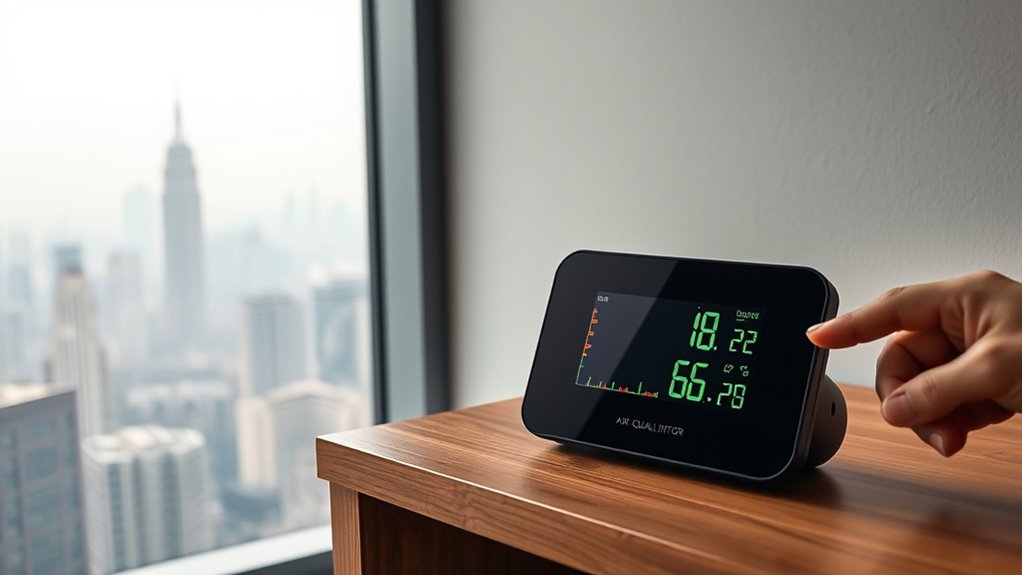
Have you ever wondered how clean the air is in your home or neighborhood? If so, you’re not alone. Many people are increasingly concerned about indoor air quality, especially since pollution and allergens can silently impact your health. That’s where air quality monitors come into play. They promise to give you real-time insights into pollutants, allergens, and other airborne particles. But do they really work as advertised? The truth lies in understanding how these devices operate and their limitations.
One of the key features of many air quality monitors is indoor allergen tracking. These devices can detect common indoor allergens like dust mites, pet dander, mold spores, and pollen. If you suffer from allergies or asthma, you probably want to know when your indoor environment is triggering symptoms. Air quality monitors equipped with allergen sensors provide valuable data, helping you identify problem areas or times of day when allergens spike. This information allows you to take targeted actions, like improving ventilation or cleaning more frequently. However, the effectiveness of allergen tracking depends heavily on the device’s sensor technology and calibration. Some monitors have highly sensitive sensors capable of identifying specific allergens, while others might only give a general overview of particulate matter.
Indoor allergen tracking helps identify triggers but depends on sensor technology and calibration for accuracy.
Beyond allergen detection, the accuracy of portable sensors is another essential factor. Portable sensors are popular because they’re easy to move around your home or even take on the go. But their accuracy can vary widely based on the quality of the sensor components. High-quality portable sensors can reliably measure pollutants like PM2.5 and VOCs, giving you a clear picture of air quality in different rooms or outdoor environments. Conversely, cheaper models might produce inconsistent or imprecise data, which can mislead you into thinking the air is cleaner or dirtier than it actually is. It’s essential to read reviews and look for devices with proven sensor accuracy, especially if you plan to rely on them for health-related decisions. Additionally, understanding the sensor technology used in these devices can help you choose more reliable options.
In the end, air quality monitors can be effective tools if you choose the right device and interpret the data correctly. They aren’t crystal balls that show the complete picture but are valuable for tracking trends, understanding your environment, and making informed decisions. Indoor allergen tracking and portable sensor accuracy are essential components to consider when evaluating these gadgets. When used properly, they can help you create a healthier living space, but it’s important to remember their limitations and supplement their insights with other measures, such as regular cleaning or ventilation improvements.
Frequently Asked Questions
How Accurate Are Consumer-Grade Air Quality Monitors?
Consumer-grade air quality monitors can provide helpful insights, but their sensor accuracy varies, so don’t expect perfect readings. You might find some devices less reliable over time or in certain environments, affecting device reliability. While they give a general idea of air quality, keep in mind that their sensors aren’t as precise as professional equipment. Use them as a guide, but verify critical data with more accurate, specialized tools if needed.
Can Air Quality Monitors Detect Specific Pollutants?
Can air quality monitors detect specific pollutants? Think of them as vigilant guardians, but their sensor accuracy varies. Most consumer-grade monitors can identify broad categories like particulate matter or VOCs, but pinpointing exact pollutants often falls short. While they’re helpful for general awareness, don’t rely solely on them for detailed pollutant detection. For precise results, professional-grade monitors with advanced sensors are your best bet.
Do Air Quality Monitors Require Calibration?
You need to calibrate your air quality monitor regularly to guarantee accurate readings. Sensor calibration is essential, especially if the device’s measurements seem off. Follow the manufacturer’s maintenance schedule, which usually includes periodic calibration and cleaning. This routine helps prevent drift in sensor accuracy over time. By staying on top of calibration and maintenance, you can trust your monitor to provide reliable data about your indoor or outdoor air quality.
How Often Should I Replace or Service an Air Quality Monitor?
You should perform regular maintenance checks on your air quality monitor to guarantee it stays accurate and reliable. Typically, cleaning sensors and replacing filters every 6 to 12 months helps maintain device longevity. Check the manufacturer’s guidelines for specific recommendations, as some models may need more frequent servicing. Proper maintenance prevents sensor drift and keeps your monitor functioning at its best, giving you peace of mind about your indoor air quality.
Are Portable Air Quality Monitors Reliable for Outdoor Use?
You wonder if portable air quality monitors are reliable for outdoor use. While they provide helpful insights, sensor reliability can vary, affecting outdoor accuracy. Factors like weather, pollution levels, and device quality influence their performance. Choose a monitor designed for outdoor conditions and regularly calibrate it to guarantee accurate readings. Keep in mind, no device is perfect, but a well-made monitor can give you valuable, real-time air quality information outdoors.
Conclusion
So, do air quality monitors truly work? Absolutely, they give you real-time insights into your environment, helping you breathe easier. But remember, even the best device is no magic wand—think of it as your modern-day compass, guiding you through unseen dangers. Just like sailors relied on their compass before GPS, trust your monitor, stay vigilant, and don’t forget that sometimes, old wisdom still holds value in today’s tech-driven world.
